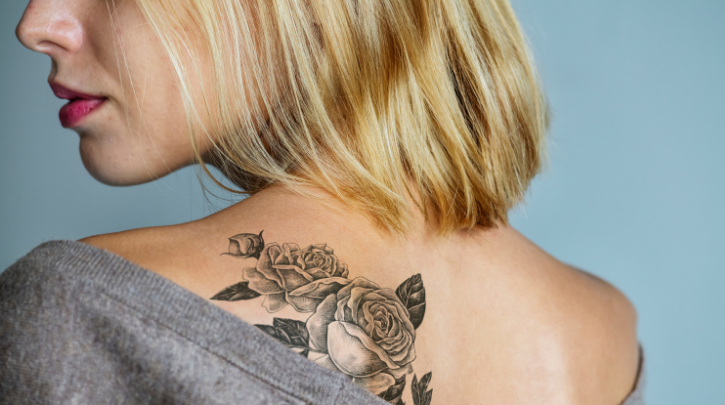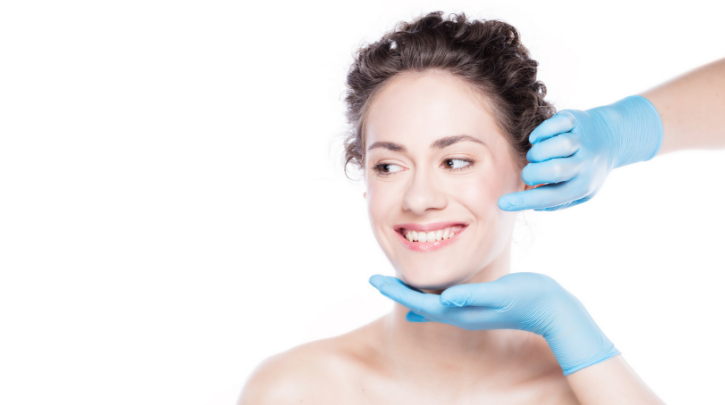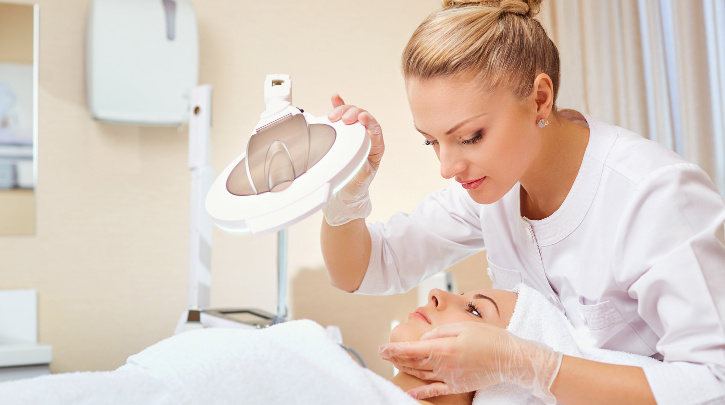With skin resurfacing continuing to be in high demand, being familiar with the top new developments, outside of conventional microneedling and laser skin resurfacing modalities, is essential to keep ahead of the competition. Here, we’ve rounded up some of the top trending skin resurfacing treatments of the past year.
Dermaplaning
Dermaplaning has grown in popularity this past year with many medispas and aesthetic clinics adding the trending treatment to their service offerings. A mechanical skin resurfacing treatment, dermaplaning utilizes a surgical steel scalpel to manually exfoliate facial skin, removing the outer layer of dead skin (the stratum corneum) along with vellus hair for smoother, brighter skin. This treatment preps the skin for better absorption of moisturizers, serums, and other anti-aging skin care while also promoting healthy skin cell renewal for a smoother, younger-looking appearance. Ideal for patients with sensitive skin or those who are pregnant, dermaplaning may be used to resolve mild sun damage, dry or dull skin, and fine lines. Dermaplaning may be an ideal treatment alternative between laser skin resurfacing appointments, when a patient may not be an ideal candidate for laser treatments, or as a complementary treatment to prep skin for further resurfacing or rejuvenation treatments. While dermaplaning is safe for most skin types, contraindications for this treatment include active and cystic acne, cold sores, dermatitis, and the recent use of Accutane or prescription retinol.
Chemoablation
While it may not be an entirely new trend in medical aesthetics, chemoablation, or chemical peels, continue to evolve as demand grows. In fact, the global market for these skin resurfacing treatments is expected to reach just over $186 million by 2021. Also referred to as chemoexfoliation, chemoablation can be used to target dark or light spots, discoloration, keratoses, uneven skin texture, fine lines and wrinkles, acne or other scars, and a dull or ruddy complexion. Chemical peels range from light to deep, which refers to the cutaneous depth. The active ingredient in light chemical peels can be glycolic, salicylic, or alpha hydroxy acid, fruit enzymes, or a lower level of trichloroacetic acid (TCA), all of which generally only penetrate the epidermis. Deep peels feature phenol acid, higher concentrations of TCA, or croton oils, which penetrate into the dermis. The idea behind the deeper penetration is that it can help target deep wrinkles, excessive sun damage, acne and other scars, and other advanced signs of aging.
For chemical ablation to occur, the chemical peel solution is applied to the surface of the skin for a set period of time before being removed. In the days following application, the upper layers of skin in the treated area peel off. The damage caused by the chemical peel spurs skin’s natural healing response, speeding up healthy skin cell renewal for a rejuvenated, more even-toned, and smoother appearance. The deeper the peel goes, the more downtime is required for skin to fully recover. Chemical peels are now generally regarded as safe for dark skin types.
Platelet-Rich Plasma Therapy
Platelet-rich plasma (PRP) therapy, or more colloquially referred to as the vampire facial, is a treatment that may be complementary to other skin resurfacing modalities, such as microdermabrasion. Platelet-rich plasma is a substance created from the patient’s extracted blood that contains proteins that speed up the body’s wound healing response by spurring cell growth and reducing inflammation. The plasma used in these treatments is created by extracting a small sample of blood from the patient and inserting the sample into a centrifuge, a device that spins at high speed, separating blood components from platelets in about 15 minutes. The resulting plasma, which contains five to 10 times more platelets than untreated blood, is then taken from the sample and injected in the treatment area to spur proper healing.
According to the International Journal of Aesthetic and Anti-Ageing Medicine, PRP has been proven to contain cell adhesion molecules (CAMs), multiple growth factors, and cytokines that together improve fibroblast activation, collagen formation, and extracellular matrix remodeling for stronger, healthier, younger-looking skin. Since the first study of its use for skin rejuvenation in 2010, there are now more than 30 different PRP processing systems that can be used to achieve a variety of PRP compositions that can be adapted dependent on the purpose and desired outcome.
Advanced Skin Resurfacing Systems
Recent developments in energy-based skin resurfacing and rejuvenation are beginning to really emphasize the advantages of complementary treatments or the combination of modalities for optimal treatment outcomes. A treatment that synergistically utilizes fractional ablative radio frequency (RF) skin resurfacing, Multi-Polar RF, and Intense Pulsed Light (IPL) technologies in one session, such as the TriBella™ facial rejuvenation treatment, is one such example. Available exclusively from the Venus Versa™ device, TriBella™ is the synergistic fusion of these three unique technologies via three different applicators in one complete treatment protocol. This allows TriBella™ to achieve unparalleled outcomes in facial rejuvenation.
Beginning with a photorejuvenation treatment targeting benign pigmented and vascular lesions, the SR515 and SR580 applicators utilize IPL technology to deliver targeted bursts of energy that are absorbed by hemoglobin or melanin, resulting in a more even complexion. The platform’s second applicator utilizes proprietary (MP)2 technology, a combination of Multi-Polar RF and Pulsed Electro Magnetic Fields (PEMF), to homogeneously deliver heat to multiple tissue depths, spurring increased collagen production to improve skin elasticity and target moderate to severe rhytides and wrinkles. The third TriBella™ applicator is the skin resurfacing component—it targets textural skin concerns, including scars, striae, rosacea, dyschromia, deep wrinkles, enlarged pores, and other uneven skin texture and pigmentation concerns. Powered by NanoFractional RF™ technology, this applicator features a tip with tiny pins that penetrate the epidermis, delivering RF energy to the dermis. The pins create micro-dermal wounds that trigger the body’s natural healing process without the need for a lot of downtime—patients can resume their usual makeup and skin care routine after only 24 hours. Together, these three TriBella™ applicators improve the production of collagen, blood cells, fibroblasts, and growth factors to even out skin texture and tone, offering the most complete three-in-one facial rejuvenation treatment with just one medical aesthetic device.
Interested in learning more? Contact a Venus Concept representative today to hear more about the benefits of our innovative TriBella™ treatment, exclusive to Venus Versa™.
Practice Enhancement Tips






